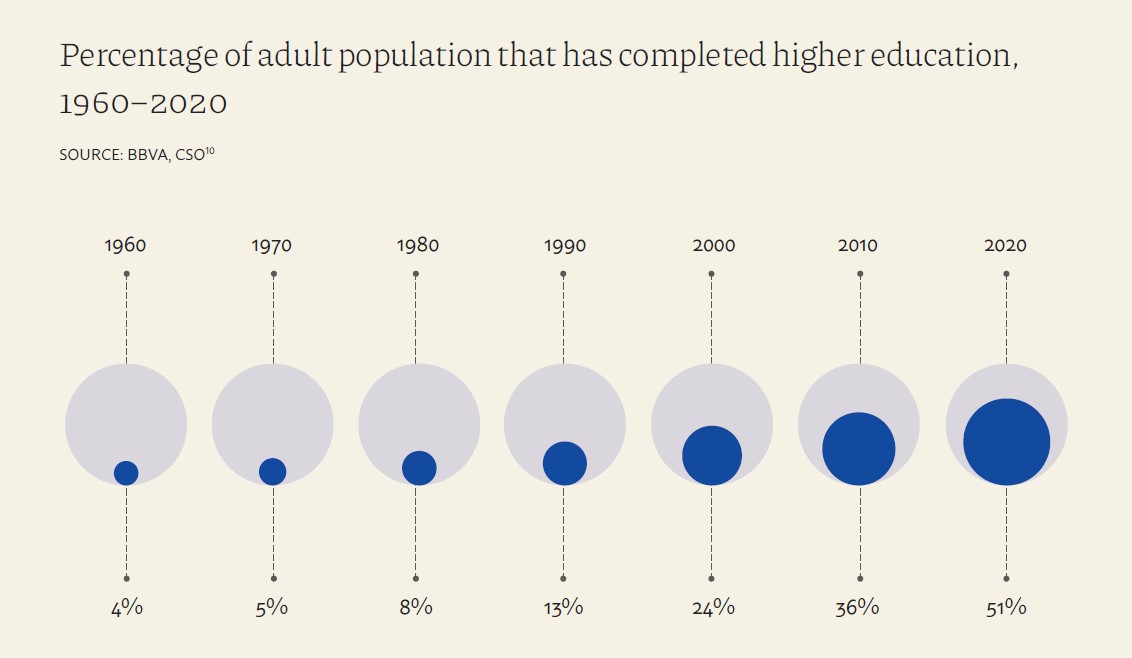Get in touch...
Email or call or contact me on social
Email or call or contact me on social
Recent claims of poor investment levels in the sector are wrong – here’s why.
The Organisation for Economic Co-operation and Development (OECD) recently published its annual report on the education sector, Education at a Glance 2021, which compares educational investment and performance across its 38 member countries.
The media coverage of the report in Ireland all ran along the same lines. The headline on national broadcaster RTÉ was “Ireland ranks bottom of the class for investment in education”. The Irish Times headline was “Ireland ranks in last place in OECD for investment in education”. The Irish Examiner ran with “Ireland worst in OECD on investing in education”. Yet all these headlines were entirely wrong.
As the report shows, Ireland’s expenditure on education per full-time student is US$8,539 per primary school student, US$10,634 per secondary student and US$17,152 per third-level student. This investment is approximately 10% less than the OECD average per student at primary level, 5% less than the average at second level, and very slightly ahead of both the OECD average, and that of their 22 EU members, in third-level spend.
Of the 37 countries in this analysis, Ireland ranks 23rd in spend per student at primary level, 22nd at secondary level and 18th at third level. While we may be unhappy about these mid-table rankings, they are far from “last place” or “bottom of the class”.
If we look at government expenditure on education as a percentage of all government expenditure, then Ireland moves up into 12th position and well above average. Ireland spends 12.6% of all government expenditure on education. That is far more than most nations, with the average across 36 OECD countries being just 10.7% and the average amongst their 22 EU members being only 9.5%. Once again, the suggestion that Ireland’s education expenditure is at the bottom of the league table is without foundation.
What the headlines fail to explain is that they refer to education expenditure as a percentage of GDP. Any Irish person with a passing knowledge of national economic indicators knows that GDP is not an appropriate measure for Ireland because it includes the significant multinational earnings of big tech and pharma. The Central Statistics Office has developed its own measure, GNI*, as a more accurate indicator of domestic economic activity. While that figure is not available for other countries in the OECD survey, a proper reading of the report shows that a like-for-like comparison would place Ireland mid-table or above, and certainly nowhere near the bottom. Irish journalists should know better.
Expenditure isn’t everything, of course, it’s the outcomes for students that matter most. On that basis, Ireland does very well indeed.
Our educational participation rates are very high – that is to say, we have one of lowest percentage of children of school-going age not participating in secondary education. The difference in enrolment across our regions is negligible – we have amongst the lowest variation of any country. And we have essentially no gender difference in education participation for either teenagers or for those in their 20s – one of only a handful of nations for which this is true.
The reading standard of our 15-year-olds is amongst the highest in the world, pipped only by Estonia, Canada and Finland. And we have one of the most highly educated adult populations in the world with half of those aged 25-64 having some third-level education, a figure only behind that of Canada, Russia and Luxembourg.

We clearly have a high-quality education system in which huge numbers of children and adults participate. We are near the top end of that table – nowhere near the bottom.
The biggest cost of running any educational system is in the payment of teachers. Even though we have the shortest school year of any OECD country and our teachers work much fewer hours than those in most other countries, Irish teachers are paid well above average. Secondary school teachers earn 20% more than the OECD average and our primary school teachers earn 30% more. Unsurprisingly, therefore, we have one of the lowest attrition rates of any OECD country – very few teachers leave their jobs.
There is evidently not a direct link between government investment in education and its quality; however, it is one contributing factor. Good pay levels attract talented people and higher investment allows more of them to be hired and, therefore, for improved pupil:teacher ratios.
One of the concerns that I identify in my book In Fact is that Ireland’s investment in third-level education per student has halved since 2008 as student numbers have grown but government expenditure remains lower than it was before the Great Recession. Given that I identify our educational investment as one of the four factors that most contributed to Ireland’s remarkable growth as a nation in recent times, restoring that quantum of third-level investment is, I believe, integral to our continued success in the decades ahead.
A highly-educated population unlocks all sorts of benefits for individuals and for the nation as a whole. The OECD report contains one surprising finding that illustrates this well: people with third-level education can expect to live 5 years longer than those who do not finish secondary school! Across all OECD countries, the higher a person’s educational attainment, the more likely they are to report being in good or very good health. And good health is, in turn, linked to greater happiness.
Our high education levels ensure that many Irish people are poised for long and happier lives, contributing both to their own well-being and to that of the nation.